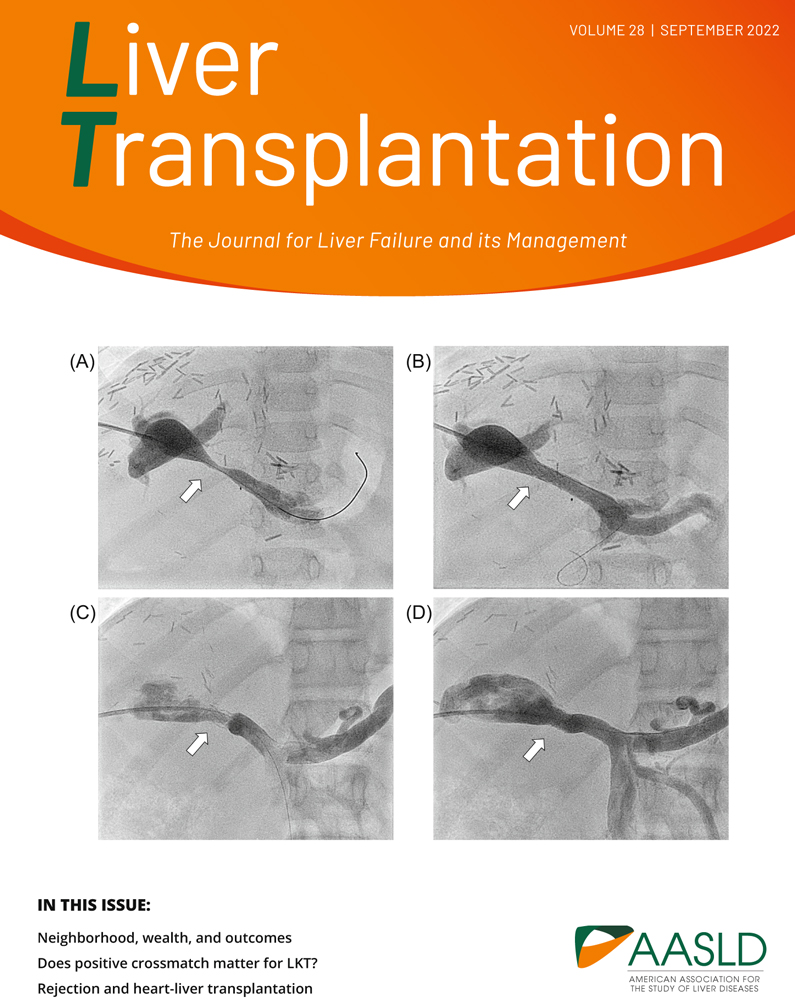Long-term outcomes of crossmatch positive simultaneous liver–kidney transplantations in the United States
Samy Riad and Elizabeth S. Aby are co-first authors.
Abstract
The long-term outcomes of positive crossmatch (+XM) simultaneous liver–kidney (SLK) transplantations are conflicting. We examined the association between crossmatch status and SLK outcomes in recipients discharged on tacrolimus and mycophenolate with or without steroids. We analyzed the Scientific Registry of Transplant Recipients for all primary SLK recipients between 2003 and 2020 with available crossmatch and induction data. We grouped recipients according to the crossmatch status: negative crossmatch (−XM; n = 3040) and +XM (n = 407). Kaplan–Meier curves were generated to examine recipient, death-censored liver, and death-censored kidney survival by crossmatch status. Cox proportional hazard models were used to investigate the association between crossmatch status and outcomes of interest with follow-up censored at 10 years. Models were adjusted for recipient age, sex, diabetes mellitus, Model for End-Stage Liver Disease score, duration on the liver waiting list, induction immunosuppression, steroid maintenance, hepatitis C infection, donor age and sex, local vs. shared organ, cold ischemia time, and previous liver transplantation status. In the univariable analysis, crossmatch status was not associated with recipient survival (log-rank p = 0.63), death-censored liver graft survival (log-rank p = 0.05), or death-censored kidney graft survival (log-rank p = 0.11). Compared with −XM, +XM recipients had a similar 1-year liver rejection rate, but higher kidney rejection rate (4.6% vs. 8.9%, p = 0.002). In the multivariable models, +XM status was not associated with deleterious long-term recipient, liver, or kidney grafts survival. −XM and +XM SLK transplantations have comparable long-term recipient, liver graft, and kidney survival with a slightly increased risk of early kidney allograft rejection in the +XM group. Crossmatch positivity in SLK transplantations should not influence the decision to use organs from a specific donor.
CONFLICT OF INTEREST
Nothing to report.




